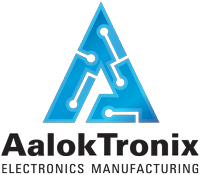Surface mount technology (SMT) is a method of assembling electronic components onto a printed circuit board (PCB) that has revolutionized the electronics industry.
Instead of using traditional through-hole technology, where components are inserted through holes in the printed circuit board and soldered in place, surface mount technology allows for components to be mounted directly onto the surface of the printed circuit board.
This method has several advantages over through-hole technology, making it the preferred method for PCB assembly. In this blog post, we are going to discuss surface mount technology with its advantages, and disadvantages.
Surface-mount technology (SMT) allows smaller components to be mounted directly onto the surface of a printed circuit board (PCB) using a process known as surface-mounting. This method eliminates the need for drilling holes in the PCB and uses leads to connect the components, which makes the PCB smaller and more compact. However, larger components or those that require more power or may experience mechanical stress may still be mounted using through-hole technology, which involves inserting leads through holes in the PCB and soldering them in place on the other side.
Advantages of Surface Mount Technology
1. Useful for smaller and more compact PCBs
Because components are mounted directly onto the surface of the PCB, there is no need to drill holes in the PCB and use leads to connect the components. This means that PCBs can be made much smaller, which is especially important for applications where space is a constraint, such as mobile devices and other portable electronics.
2. More efficient and cost-effective method of PCB assembly
Because components are mounted directly onto the surface of the PCB, there is no need for manual insertion and soldering of components. This means that SMT can be done at a faster pace and with fewer labor costs. Additionally, SMT allows for the use of smaller components, which can also reduce costs.
3. Better quality control and consistency
Because the process is mostly automated, there is less room for human error. This means that the final product is more consistent and has fewer defects. Additionally, the use of machines and specialized equipment allows for more accurate placement of components, which can improve the performance of the final product.
Disadvantages of Surface Mount Technology
1. Not suitable for large components
One of the main disadvantages of SMT is that it is not suitable for large components or those that require more power. Larger components, or those that may experience mechanical stress, may still be mounted using through-hole technology, which involves inserting leads through holes in the PCB and soldering them in place on the other side.
2. Higher level of precision
Additionally, SMT requires a higher level of precision in the manufacturing process and may require specialized equipment, which can add to the manufacturing cost.
Final Words
In conclusion, surface-mount technology (SMT) is a method of assembling electronic components onto a printed circuit board (PCB) that has revolutionized the electronics industry. Its advantages include smaller and more compact PCBs, efficiency, cost-effectiveness, better quality control, and consistency. However, it also has its limitations, as it is not suitable for large components or those that require more power. Despite this, SMT is widely used in the electronics industry and will continue to be a preferred method for assembling PCBs in the future.
